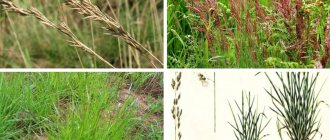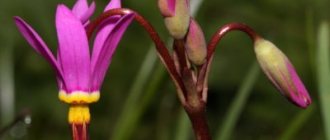- November 3, 2018
- Flowers
- Galina Chebykina
Bacopa (otherwise known as sutera) is the most beautiful of flowering plants, which will help decorate not only the loggia, garden plot and stone walls, but also the entire apartment. These flowers began to be cultivated in Russia not so long ago - from the 90s of the twentieth century, but in such a short period of time many people fell in love with them. The plant arrived in our region from Africa. It is noteworthy that the sutera blooms, which, with proper care, lasts from March until the end of October. Today we will talk about growing bacopa from seeds. Photos of the plant are also posted in the publication, and they will help you fully imagine all the beauty of the flowers.
Description
This is a herbaceous plant, its branches can grow up to 0.7 meters in length. The leaves are small in size, paired, painted in a pleasant green color, where a shade of olive is clearly visible. Photos of bacopa, the cultivation of which we will consider in the publication, will help you appreciate how beautiful its flowering is. This is why she was loved by many gardeners. The flowers themselves are not large in size, but due to the friendly flowering, the plant looks very impressive. The most common color is blue, but there are white, pink and purple varieties.
The flowers do not bloom smoothly, but almost simultaneously. Then they bloom and fall off at the same time, but fresh buds immediately take their place.
We suggest further familiarization with the varieties and photos of bacopa. Growing from seeds of all types is the same, care is the same, and we will consider all this below. In general, in nature there are more than 60 species of this hanging plant. We will not get acquainted with all of them, but will consider only the most popular ones.
Popular varieties of bacopa
Bacopa ampelous - growing, care, planting
A description of the main plant species is presented below.
Bacopa blue
This plant variety is used as a hanging plant. Long creeping shoots are completely covered with blue or light lilac flowers. Flowering takes quite a long time.
Bacopa Blutopia
This is an annual plant with shoots up to half a meter. From the beginning of summer until the end of October, the bushes are covered with very small, beautiful blue flowers. Used to decorate borders and gardens. Grows well in hanging pots. Loves a lot of lighting. If there is not enough sunlight, it stops blooming.
Variety Double Lavender
Bacopa Scopia Double Lavender
The entire bush is covered with double light lilac flowers. The semicircular, creeping habit of this species is well suited for hanging pots and looks good both in solitary planting and in composition with other hanging plants. Sutera is often planted by lovers of rare green compositions to create a screen. In the garden it can be planted as a background flower to highlight neighboring flowers. Blooms until early winter.
Bacopa Vasilisa
Growing branches reach more than 0.7 m in length. Can grow in the shade or in bright light. Flowers are bright light purple. They sit in flower beds, loggias and gardens. Looks very good in compositions with small roses, petunias, lilies and other flowers. The Pink Domino plant species is very similar to this variety.
Bacopa terry
Gardeners like terry sutera due to its voluminous foliage. The entire plant is covered with small flowers up to 2 cm in diameter, light pink in color with a small yellow spot in the middle.
Bacopa white
The stems are about 50 cm in length, the flowers are small and light. The variety is quite decorative due to the color of the leaves; they have a golden hue.
Bacopa Snowtopia
This plant is very easy to care for, but it looks very attractive, with small five-petaled white flowers. Stems up to 0.7 m long are covered with small round petals. At the peak of flowering, the sutera bears a strong resemblance to a lush ball. It is mainly used for single cultivation in vases and pots, as well as for creating different compositions with other flowers.
Note! It grows well in partial shade rather than in bright light.
Bacopa Double Snowball
This variety has double and semi-double small flowers that are very white. Petals grow in two rows. The diameter of the bush is about 35 cm.
Sutera forms a dense bush with long dense branches. Looks good in hanging pots and balcony boxes.
Bacopa Sutera
It is also called Bacopa australis. This bush is herbaceous, easy to care for, and quickly climbs and creeps. The branches of the flower can exceed 60 cm in length. The petals are small in size, growing in pairs on the branches. The color is swamp green.
Bacopa Gulliver
This plant climbs very well, up to 30 cm in height, the length of the lashes reaches 50 cm. The flowers are large, 2.5 cm in diameter, ordinary, white, densely strewn on the branches. They bloom in fluffy waves from early spring to mid-October. The leaves are small, greenish-olive in color. The plant loves abundant and frequent watering, especially if the summer is very hot and without rain.
Snow avalanche variety
After each watering, the soil needs to be loosened a little, but this must be done very carefully, since the plant has a superficial root system.
Note! Main use for gardens, borders, planting in vases, baskets, hanging pots, flowerpots.
Bacopa Snow Avalanche
This plant variety is very large and easy to care for, with shoots over a meter long. The leaves are small. Large white buds are close to each other. The bush looks very beautiful in a hanging flowerpot, because its branches are densely covered with flowers, which is why they look like snowdrifts. The plant blooms for 3-4 months in a row.
Bacopa Rafael
In sutera, drooping shoots more than 45 cm long are densely strewn with small purple flowers, alternating with bright green leaves arranged in pairs. The excellent properties of the bush are long flowering (from late spring to late summer), the ability to self-clean from faded flowers and resistance to heavy rains.
Bacopa spreading
This plant is the most widespread on the Russian market. It is highly valued for its beautiful cascade of constantly flowering shoots, the entire bush is covered with flowers. This is the best plant for hanging pots and looks good when paired with other plants. Very easy to maintain, attractive enough to decorate homes in the summer. This variety is characterized by high resistance to bad weather conditions and various pests.
Bacopa is a versatile plant. Looks good both alone and with other colors. It is better to choose varieties that are less finicky to care for. When purchasing seeds, you should always read the growing instructions. There are certain types of plants for aquariums and gardens, for example, Bacopa Colorata or the Madagascar variety, which grows well in warm water.
Snowtopia
In addition to its beauty, this plant is completely unpretentious. The only thing is to ensure that it is planted in places where direct sunlight does not penetrate.
When in bloom, Snowtopia resembles a large ball of flowers. The shoots of this plant can grow up to 60 centimeters, the flowers are white. This type of bacopa is perfect for growing in baskets and flowerpots and harmonizes in combination with other flowering and non-flowering plants.
Bacopa in garden landscape design photo
A distinctive feature of the plant is its rapid growth, long-term preservation of the decorative properties of rich leaves and beautiful flowers. Sutera is used to decorate and give an attractive appearance to coastlines, fences, walls, and fences.
An indomitably blooming and fragrant carpet of bacopa looks great in a flowerbed. Displays of fresh flowers go well with lobelia, fuchsia, petunia, and nasturtium.
Blutopia
This is a beautiful annual plant whose shoots grow up to 60 centimeters. During the flowering period, it is covered with small blue flowers, there are a lot of them. When growing Bluetopia from bacopa seeds, it is worth considering one thing: the sun really loves this plant! If there is not enough natural light, the shoots of the plant will begin to stretch out, become thinner, and at the same time flowering will stop completely.
Blutopia is used to decorate gazebos, borders, and also at home, where it looks beautiful in flowerpots, baskets and flowerpots.
Vasilisa
The shoots of this variety are drooping and grow from 30 to 60 centimeters. The color of the flowers is special - delicate, but quite rich purple. It harmonizes perfectly in compositions with many other plants, including bright flowering ones.
Growing Bacopa Vasilisa from seeds is possible both in sunlit areas and in shaded (but not completely dark) areas.
Plant species
Bacopa Carolinas is a moisture-loving plant that is planted along the banks and in water if the depth is more than 35 cm. It is often grown at home in aquariums. It has a thick stem on which leaves form crosswise. The flowers are bright blue.
Bacopa australis is a small plant with light green leaves. Grows in water. The formation of blue flowers occurs on the above-water areas of the shoots.
Bacopa Monnieri is distinguished by creeping stems with elongated leaves up to 20 mm. Axillary flowers have a corolla with different colors - blue, white or red.
Bacopa is spreading - it blooms for a long time and is able to independently shed flowers that have wilted. It has varietal differences in shades - from white to purple and lilac.
Giant Snowflake
The name speaks for itself - this is a giant plant, the shoots of which grow up to a meter. The foliage, like other varieties, is small, but the flowers are already large, white, bloom together and perfectly decorate any landscape of a personal plot, loggias and balconies, and also look great at home in hanging and table baskets.
The plant is very unpretentious, and you will understand this when growing bacopa from seeds. Photos and descriptions of flowers will help you decide on the choice of variety.
Is it possible to grow bacopa yourself?
Many doubt whether they can grow such a beautiful plant on their own at home. Most people do not dare to test their strength, believing that such plants are very capricious and require a lot of time, care and maintenance. This is a misconception, at least it applies to bacopa. Growing from seeds is possible for anyone, even those who have no desire for farming and are encountering such a thing for the first time.
Plant seeds can be sown both in pots (for seedlings or for permanent cultivation) and in open ground. The main thing for a plant is good and light soil. Growing from bacopa seeds, a photo of which is in the publication, should be started in sunny and warm areas, so the first shoots will appear faster.
Reproduction by layering
This method allows you to quickly get a new strong plant. First you need to prepare a container with soil that has high fertility indicators. It is placed near the pot with the mother flower.
Bacopa sprigs are placed on the surface of the soil of a new pot and pressed, for example, with an iron clamp. Periodically it is necessary to check the state of development of the new root system. After rooting, the sprout separates.
Soil preparation
Not any soil is suitable for growing this flower; its composition should ideally be as follows: one part each of peat and leaf soil, two parts each of good humus and river sand - the composition is capable of absorbing and retaining moisture well. This soil is suitable not only for growing in flowerbeds or lawns, but also for home cultivation - in flowerpots, flower pots, or just pots.
Growing ampelous bacopa from seeds is a simple matter, but everyone should know that the soil must be disinfected before planting the seed. If you want to plant a plant on a plot near your house, then simply pour boiling water over the soil. If you are growing it at home, you can spread the bud on a baking sheet and then fry it for 20 minutes in an oven preheated to 180-200 degrees.
Planting a plant in open ground
Disembarkation time
As a rule, it is recommended to plant this plant in the garden only when the night frosts are already behind. Usually this is the second half or the end of May.
But before you start planting, the plants should be hardened off. How to do it? Take your bacopas outside every day to “breathe.” First for 15 minutes, then for 20 minutes. And gradually increasing the time they spend outside the home. They can be planted when the pots can be left outside for 24 hours. At the same time, after each removal to the street, it is worth carefully examining the leaves and the bushes themselves. Are they all right?
Planting rules
The area where you want to plant bacopa should not only be well lit, but also reliably protected from drafts. Although, of course, you can plant the bush in a shaded corner. But in this case, the flowering will no longer be so beautiful and bright. But if you plant a plant in the shade, you risk getting a flower with long stems and completely sparse and sparse flowering.
Bacopa does not have too many complaints about the soil. Simple, but not very acidic and quite nutritious soil is well suited for it. The main thing is that it allows water and air to pass through. When planting, also keep in mind that the distance between plants is at least 10-25 centimeters. That is, the larger the bush, the greater the distance.
Seed preparation
If you purchased seed in a store, you most likely received granules that are very easy to use. The advantage of such granules is that the seeds in them are already processed, and you will not need to waste time on this. One such granule never contains just one seed, there are several of them. The manufacturer does this to increase the percentage of germination, and as a result, when growing from one pellet, the consumer receives not one stem, but several young plants.
If you still have seeds in their usual form, you will have to try a little. First of all, it is recommended to mix the seeds with river sand - this is necessary to reduce losses, since the seeds are very light. Next, fill the material with a weak solution of manganese and keep it in this form for several minutes.
Sowing
When to plant bacopa? Growing from seeds in open ground is a simpler matter, but it is only suitable for warm regions where frosts no longer occur in April. It’s easier to plant seeds for seedlings, and only then plant them in open ground or in pots. The seeds are sown in the first week of March. If you decide to plant a flower earlier - in mid-February, then you will have to provide additional lighting to the plantings.
- Prepare the soil mixture according to the recipe described above, distribute it over the tray. Moisturize.
- If you have granules, stick them into the ground, do not sprinkle them. Simple seeds are placed carefully with tweezers on top of the soil, and they also do not need to be sprinkled; germination will be more productive in good light.
Next, you need to create optimal conditions for germination - heat, light, high humidity. How to ensure all this?
- Gently water the plantings with water at room temperature. To prevent the seeds from being washed away, do not use a watering can; it is better to water in small portions from the palm of your hand or with a spray bottle.
- Cover the tray with a plastic bag and place it on the windowsill, where there is no draft and the sun shines longer than on other sides of the apartment.
The best temperature for rapid germination is not lower than +20 degrees. If you do everything correctly, then in two weeks you will see the fruits of your labor - the first shoots.
Correct placement
It is best to place the plant in the aquarium in a separate pot and place it on a side shelf near a natural light source or lamp. Bacopa monnieri looks good in the corners of the aquarium, as this plant grows rapidly and occupies the entire corner area. Growing the plant horizontally can be achieved by pressing it down with a rock, after which it will take root properly and resemble a thin green mat. A very beautiful combination can be achieved by planting different types of bacopa at different levels, placing them around the perimeter of the aquarium.
Seedling care
Growing bacopa from seeds at home is not difficult, but painstaking, and in order to get a healthy and beautiful plant, you need to follow the following instructions when seedlings appear:
- The sprouts can remain in one tray until they produce at least two true leaves. After this, you will need to make seating arrangements.
- If you have bunches of pellets, then place one bunch in one pot. If you have sprouted individual seeds, you will need to plant several of them in a pot at a distance of 1.5-2 centimeters from each other.
- After replanting, you can (not necessarily, but preferably) make the first fertilizing. Buy a universal fertilizer for flowering plants, but dilute it not as indicated in the instructions, but twice as weak.
- Productive cultivation of seedlings will only occur at high temperatures; it is advisable to adhere to the range from 22 to 26 degrees. If necessary, a heater is installed.
- In a week or two you will need to re-pick. Here you will need to plant the sprouts separately from each other in different pots. You need to deepen the sprout by one node, so it will be more stable.
When to plant depending on the region?
Bacopa seedlings will be ready for transplanting into a flowerbed at the age of about 60-75 days. Based on this, the time for sowing seeds in different regions is as follows:
- South of Russia – end of February or beginning of March.
- Middle Zone (including the Moscow region) - starting from the second ten days of March.
- Ural, Leningrad region, Siberia - second half of March.
ON A NOTE. Ampelous varieties can be sown a little earlier.
Hardening
Growing bacopa both in open ground and in pots at home will be more productive if you use the seedling method. It doesn’t matter whether you take the seedlings out into the flower beds or place them in a beautiful flowerpot in the room, young bushes must go through the hardening stage. This will help the plant to easily tolerate drafts, coolness, and temperature changes.
- 2-3 days after repeated picking, you need to apply fertilizer again. The same universal one that was used the first time will do, but it will need to be diluted according to the instructions.
- After feeding, young plants can be easily hardened off. During the day, keep the temperature in the range from 20 to 23 degrees, and at night even less - from 12 to 15 degrees Celsius.
Bacopa flower propagation methods
We examined the seed propagation method. Now we have to get acquainted with cuttings. For this method, Bacopa cuttings should be prepared; their length should be up to 10 cm. To root them, you will need to plant them in loose soil based on sand and vermiculite (proportion 1 to 1). The cutting is buried in the soil so that 1 node is located under the ground, because roots will form there.
The second node should be on top of the substrate so that new shoots can develop from there. You can observe the appearance of roots after 14-21 days. To speed up this process, the cuttings are treated with phytohormones, which will stimulate the development of the root system.
From above, the cutting that takes root is covered with a glass jar or a piece of bottle. Then it is transferred to a bright room, protected from ultraviolet rays. It is important to regulate soil moisture and not let the cuttings dry out. After the formation of new shoots begins, the bush is pinched, this will make it more lush.
The optimal period for harvesting cuttings is January-April. It is recommended to cut them from an adult plant.
You can learn more about flower cuttings from this video.
Landing at a permanent place
It is necessary to plant in open ground only after there is no longer a threat of frost. Hardening is a mandatory procedure. Plants are placed in flower beds at intervals of 30 centimeters.
If you want to plant bacopa in flowerpots, flowerpots and pots, then do it whenever you like, but only after hardening. One plant per pot. It seems small and thin, but it will soon begin to develop, and even two individuals will feel cramped. Bacopa can also be taken out onto balconies and unheated loggias only if there is no threat of frost.
Basic care
Growing bacopa from seeds at home is not difficult, but it still requires compliance with several conditions:
- Frequent and abundant watering is the most important rule when growing a wonderful plant. The flower loves a lot of moisture; compliance with moisture standards is especially important on dry and hot days. Only with sufficient watering will the sutera develop, become spreading, and delight with abundant and long-lasting flowering.
- The second mandatory condition is to apply fertilizing up to 3-4 times per season. Bacopa does not require any “pickle pickles”. Fertilizers intended for complex feeding of flowering plants are quite suitable for her.
Decorating a bush is a matter of personal taste. If you want the plant (especially those growing in hanging baskets) to resemble a flowering ball, then pinch the shoots when they reach a length of 50-60 centimeters. If you want the flowering shoots to be of different lengths, hanging down, reminiscent of flowing water, then you can do without tweezing.
That's all care. You don’t even have to free the plant from faded buds yourself, since bacopa sheds them on its own. In place of old, fallen flowers, new ones will soon bloom.
Bacopa ampelous planting
Since bacopa seedlings are quite expensive (the price per bush, as a rule, exceeds 50 rubles*), the important question for gardeners is how many seeds should be purchased and how many can be planted. It should be assumed that two, maximum three plants are planted in one 5-liter pot. This flower grows in bunches, so even two bushes in a pot, with good care, grow so much that by the end of summer you can get a cloud of foliage dotted with small flowers.
Bacopa in bloom
Although this flower is often planted in flowerpots, bacopa looks spectacular in hanging baskets and plant pots.
When planting a plant in this way, it is important to make sure that the container retains moisture well in the soil and also stands in a well-lit place
For your information! In the shade, the flower tends to stretch out and the shoots become less leafy.
What pests and diseases are dangerous to the plant?
Bacopa is an unpretentious plant and is resistant to diseases and pests. The worst thing for her is aphids, which can be gotten rid of with insecticides or soap solution.
When the soil gets too dry, whiteflies may appear. Only complete removal of the top part of the plant will save you from it. Next, remove the pot to a dark and cool place; treating the roots with chemicals is harmful to the plant, and it is used only as a last resort.
In the article you will find rules for growing bacopa from seeds and photos.
Care and cultivation at home
Bacopa is undemanding when grown at home. It is worth paying attention to only a few aspects.
View this post on Instagram
Posted by Ekaterina Milman (@ekaterinamilman9) Jul 13, 2021 at 10:50 am PDT
Watering
The flower is moisture-loving. It needs a lot of water and watering should be frequent . To improve gas exchange, it is recommended to carefully loosen the top layer of soil after each watering (try not to damage the surface root system).
Top dressing
The plant is fed by alternately using organic and mineral fertilizers .
Important! In winter, feeding is stopped completely.











